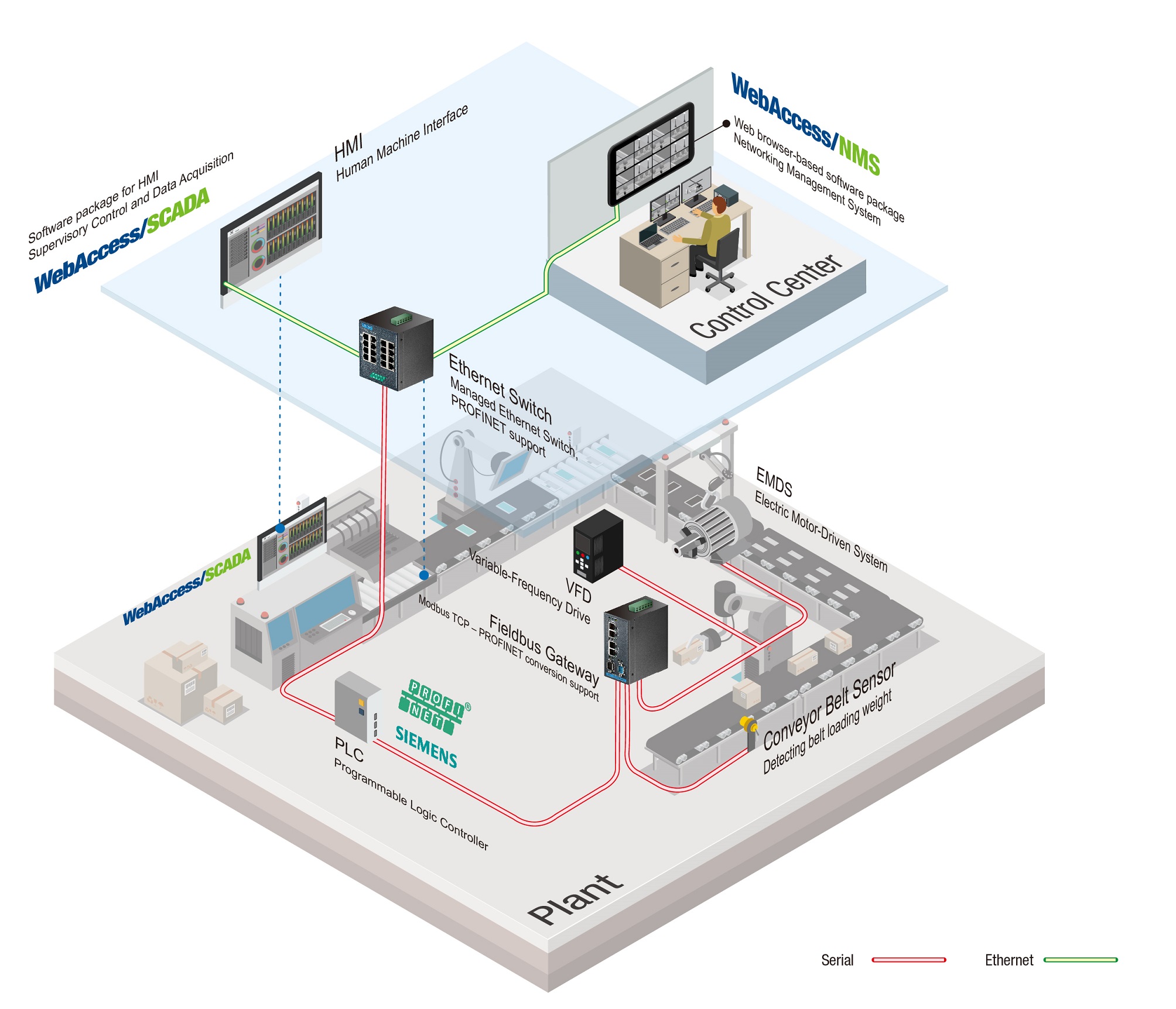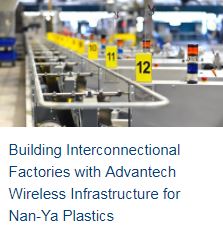Reducing the Electricity Consumption of Electric Motor-Driven Systems (EMDSs)
22/01/2018
Introduction

Challenges
Solution

The procdure is outlined as follows:
Features, Advantages, and Benefits

IntegrationDifferent PLCs from different vendors usually support different protocols (e.g., Modbus TCP for Schneider, PROFINET for Siemens, and EtherNet/IP for Rockwell). Although ensuring protocol support might not be a difficult task for small start-up plants, upgrading and integrating a system to accommodate increases in business scale can be complex and costly. Advantech’s Fieldbus product line supports various widely used industrial protocols (e.g., PROFINET, EtherNet/IP, and EtherCAT), thus easing the pressure of data conversion from various legacy devices such as VFDs.
FlexibilityWith Advantech’s Fieldbus gateways, existing EMDSs, VFDs, PLCs, and original network infrastructure become reusable and upgrade-ready. This makes it possible to “future-proof” any plant because operators would simply need to spend only a little time and efforts on upgrading and can derive the most from the latest technologies. EMDSs currently on the market consume less power yet perform better than ever, resulting in greener plants and providing greater environmental protection.
ManagementThe user-oriented design of the various WebAccess packages allows for real-time equipment status review, immediate diagnosis, and smart analysis. Advantech’s WebAccess/SCADA can be used to automate complex industrial processes for situations involving remote operations. All the features found in conventional HMI and SCADA software packages can be accessed through a conventional browser, giving access to animated graphics, real-time data control, trends, alarms, and logs. WebAccess/NMS enables industrial-grade centralized networking management and provides a platform developed specifically for monitoring, setting, and maintaining devices via an IP-based network.

Conclusion
Product Information
More to Read

By collecting production line operation status and machine condition data in its Taoyuan campus, NYP can enhance its overall equipment effectiveness and shorten its time to market.

By implementing Advantech solution, managers can migrate seamlessly from traditional to future network infrastructure with minimum downtime and maximum flexibility.

These devices can be deployed in both flood monitoring areas and control rooms to achieve flood forecasting and early disaster.

Advantech’s Wzzard LRPv Node and SmartSwarm 243 Gateway can facilitate minimizing irrigation water wastage by utilizing LoRa technology to build an efficient, cost-saving system.

Wzzard LRPv Nodes and SmartSwarm 243 LoRa Gateway can facilitate improving overall equipment effectiveness to build a reliable system for monitoring the condition of machines.

/WebAccessNMS_DS_s20151202170042.png)
/EKI-1224 _S20180125185011.jpg)
/EKI-1224CI _S20180125185241.jpg)
